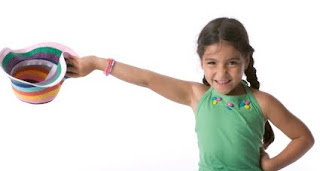In my experience as a Montessori teacher, every age group enjoys hearing stories about real events. They love stories about my childhood and school years, my son, my husband, and any funny escapades I have experienced. I am always impressed with their focused attention and the fact that they remember so many details from these exchanges. This storytelling not only strengthens the bond between us, but helps model storytelling that they can then practice, which helps students grow comfortable with narrative structure. This exposure to narrative structure also assists Montessori students with reading comprehension and creative writing.
Montessori Storytelling: True Stories in the Early Childhood Environment
When working with the developing language skills of the 0-3 age group, storytelling may be most appropriate and beneficial with the Montessori teacher acting as storyteller and sharing true stories such as their personal experiences. Sharing short stories about each of the children in the Montessori classroom is another fun way to nurture enjoyment of true stories. Students might enjoy trying to guess which student you are telling the story about. Use storytelling to discuss sequence (what makes sense, beginning, end, and middle, etc.). Sharing a story can help focus a group and grasp their attention. After your storytelling time, students can create artwork inspired by the story.In the Montessori 3-6 environment, students still enjoy true stories of your personal experiences and stories about their classmates. Montessori 3-6 students are more capable of telling their own stories. Think about designating a storytelling place in your Montessori classroom. Perhaps your true stories are related in circle time or maybe they are told in a reading area. Different methods can be explored for how your students will share their experiences. At this age students often enjoy a show and tell format, pulling a topic or prompt word from a hat, or deciding on a story based from a theme (summer vacation, the weekend, hobbies, etc.) After your storytelling sessions, Montessori early childhood students can create art, retell stories they just heard, record stories, and create poems.
Enthusiasm and expression is an important part of everything we do in the Montessori environment. Let your stories come alive!
See our related blog:
As much as possible, NAMC’s web blog reflects the Montessori curriculum as provided in its teacher training programs. We realize and respect that Montessori schools are unique and may vary their schedules and offerings in accordance with the needs of their individual communities. We hope that our readers will find our articles useful and inspiring as a contribution to the global Montessori community.
© North American Montessori Center - originally posted in its entirety at Montessori Teacher Training on Wednesday, July 21, 2010.
© North American Montessori Center - originally posted in its entirety at Montessori Teacher Training on Wednesday, July 21, 2010.


0 comments:
Post a Comment
Have questions or comments? Let us know what you thought about this article!
We appreciate feedback and love to discuss with our readers further.